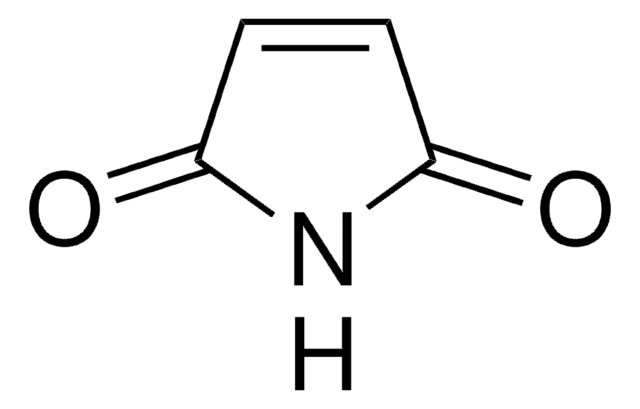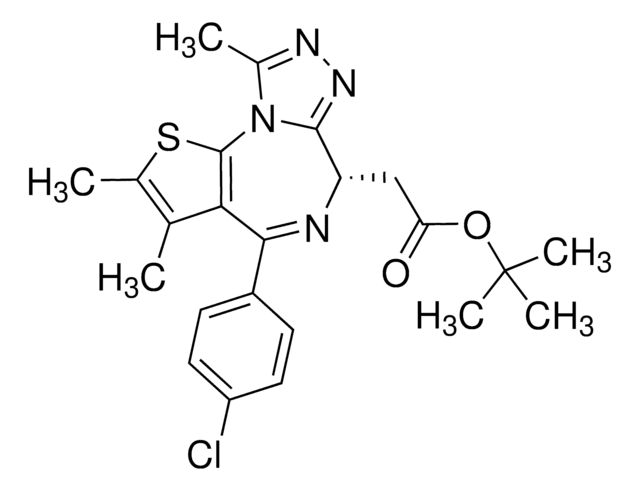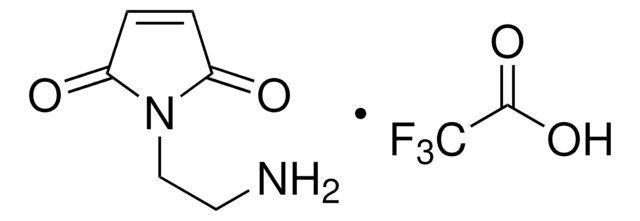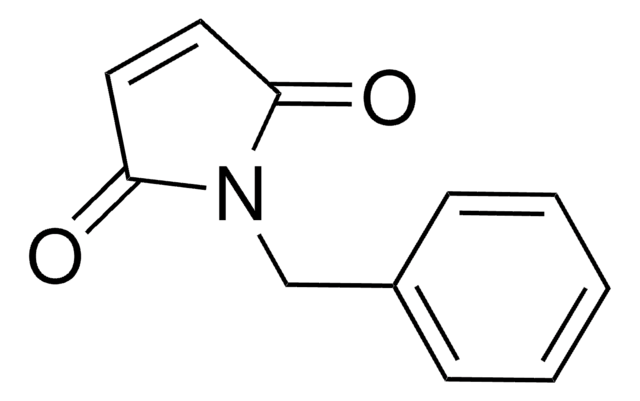692905
N-Ethyl-d5-maleimide
99 atom % D, 98% (CP)
Synonym(s):
NEM (ethyl-d5)
Sign Into View Organizational & Contract Pricing
All Photos(1)
About This Item
Empirical Formula (Hill Notation):
C6D5H2NO2
CAS Number:
Molecular Weight:
130.16
MDL number:
UNSPSC Code:
12352005
PubChem Substance ID:
NACRES:
NA.13
Recommended Products
isotopic purity
99 atom % D
Quality Level
Assay
98% (CP)
form
powder
mp
43-46 °C (lit.)
mass shift
M+5
storage temp.
2-8°C
SMILES string
[2H]C([2H])([2H])C([2H])([2H])N1C(=O)C=CC1=O
InChI
1S/C6H7NO2/c1-2-7-5(8)3-4-6(7)9/h3-4H,2H2,1H3/i1D3,2D2
InChI key
HDFGOPSGAURCEO-ZBJDZAJPSA-N
General description
N-Ethyl-d5-maleimide is a deuterated isotope analog of N-ethymaleimide, wherein methylene and methyl protons are replaced by deuterium.
Application
N-Ethyl-d5-maleimide can be used:
- To synthesize isotopic silica nanotag by reacting with silica precursor 3-mercaptopropyltrimethoxysilane (MPTMS) for multiplexed ion beam imaging.
- As an isotopic internal standard to determine the ratio of glutathione (GSH) and glutathione disulfide (GSSG) in cultured cells using HPLC-UV and LC-QTOF-MS.
Packaging
This product may be available from bulk stock and can be packaged on demand. For information on pricing, availability and packaging, please contact Stable Isotopes Customer Service.
Signal Word
Danger
Hazard Statements
Precautionary Statements
Hazard Classifications
Acute Tox. 2 Oral - Acute Tox. 3 Dermal - Eye Dam. 1 - Skin Corr. 1B - Skin Sens. 1
Storage Class Code
6.1A - Combustible acute toxic Cat. 1 and 2 / very toxic hazardous materials
WGK
WGK 3
Flash Point(F)
163.4 °F - closed cup
Flash Point(C)
73 °C - closed cup
Choose from one of the most recent versions:
Already Own This Product?
Find documentation for the products that you have recently purchased in the Document Library.
Stefan Harmsen et al.
Advanced materials technologies, 5(7) (2020-07-15)
High-dimensional profiling of markers and analytes using approaches, such as barcoded fluorescent imaging with repeated labeling and mass cytometry has allowed visualization of biological processes at the single-cell level. To address limitations of sensitivity and mass-channel capacity, a nanobarcoding platform
T R Sutton et al.
Redox biology, 16, 359-380 (2018-04-09)
Several diseases are associated with perturbations in redox signaling and aberrant hydrogen sulfide metabolism, and numerous analytical methods exist for the measurement of the sulfur-containing species affected. However, uncertainty remains about their concentrations and speciation in cells/biofluids, perhaps in part
Benjamin Neuditschko et al.
Molecular & cellular proteomics : MCP, 19(3), 478-489 (2020-01-02)
The prediction of metastatic properties from molecular analyses still poses a major challenge. Here we aimed at the classification of metastasis-related cell properties by proteome profiling making use of cutaneous and brain-metastasizing variants from single melanomas sharing the same genetic
Xueni Sun et al.
Metabolites, 10(7) (2020-07-28)
Glutathione (GSH) and glutathione disulfide (GSSG) are commonly used to assess the oxidative status of a biological system. Various protocols are available for the analysis of GSH and GSSG in biomedical specimens. In this study, we present an optimized protocol
Our team of scientists has experience in all areas of research including Life Science, Material Science, Chemical Synthesis, Chromatography, Analytical and many others.
Contact Technical Service







